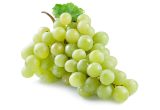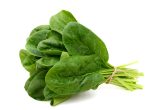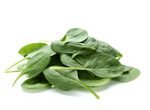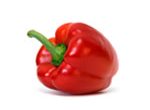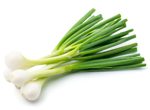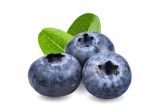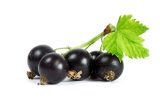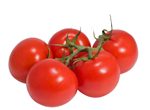Reine-Claude plum

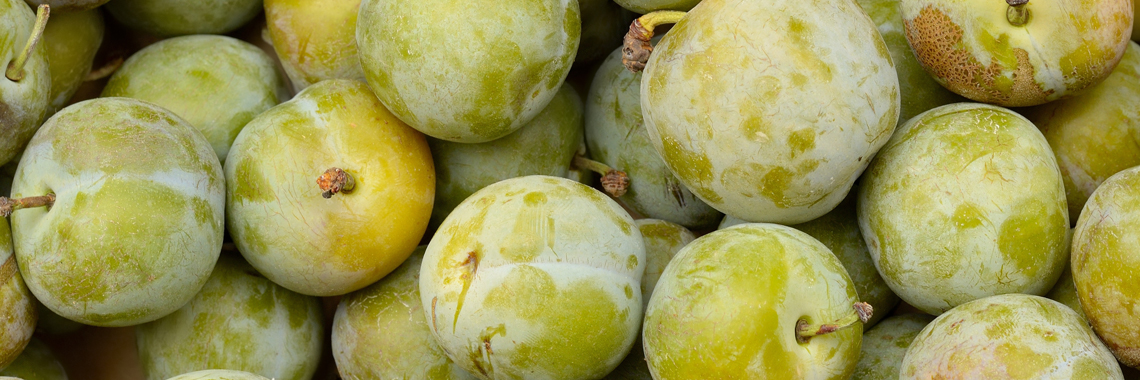
Description
- The greengage, also called Italian plum, belongs to the Rosaceae family, genus Prunus, species domestica, subspecies Italica (Zhebentyayeva, 2019).
- In 1793, the plum could be found in local nursery catalogues under the name “Grosse Reine Claude” or “Petite Reine Claude” in honour of Queen Claude who ruled France in the early 1500s (Caillavet, 1991).
- Greengages are round fruits of different colours, ranging from green “reine-claude verte”, to yellow “reine-claude d’Oullins” or purple “reine-claude d’Althan” (Fernandez, 2017).
PHYSICAL AND ORGANOLEPTIC CHARACTERISTICS
- The greengage belongs to a class of plums widely grown in Europe (Karp, 2013). The flesh is juicy and sweet. The fruit is used mainly for fresh consumption and sometimes for the production of brandy (Neumüller, 2011).
- A number of fruits, including plums, develop a pronounced epicuticular wax layer responsible for their attractive visual appearance. After harvesting, packaging and transport, this protective layer can be damaged or removed. The resulting appearance generates the impression of poor fruit quality (Mukhtar, 2014).
- The commercial shelf life of the greengage varies from 20 days, for fruit harvested at the last harvest date, to 40 days for fruit harvested at earlier dates. However, fruits from earlier harvests are less accepted by consumers than fruit from later harvests due to their low total sugar content (Guerra, 2010).
- Weather conditions in the last month of plum formation are reported to determine their concentration of sugars and organic acids (Сердюк, 2015).
COMPOSITION CHARACTERISTICS (excluding macronutrients, vitamins and minerals)
- Studies on the health effects of plums have increased in recent years, due to their high phenol content. Plums have been shown to possess antioxidant and anti-allergic properties, and consumption has been associated with improved cognitive function, bone health parameters and cardiovascular risk factors (Igwe, 2016).
- After studying 8 plum cultivars, the “green” type of greengage showed the highest phenolic content (210 mg/100 g body weight) as well as total antioxidant activity (476 μmole/g). These results suggest that this type of fruit rich in phenolic antioxidants is a promising food to be used against various oxidative stress related diseases (Imtiyaz, 2012).
- Fruits of 10 greengage genotypes including Damiri, Gareh Zar, MP102, MP115, MP125, Gojeh Soltan, MP110, Sari Zar Zehtab and MP118 were analysed. Parameters such as total sugars, vitamin C and total phenolic compounds increased during fruit ripening. Conversely, chlorogenic acid, total antioxidants and flesh firmness decreased (Khalili, 2019).
RAW
The following values are approximate and depend on variety, season, ripeness, cultivation conditions, etc. The greengage provides an average of 71.30 calories (kcal) per 100 g, i.e. 301 kJ.
COMPOSITION TABLES
For each nutrient, the tables provide information on the content, minimum and maximum values, as well as the percentage of the Dietary Reference Values (DRVs) for 100 g net of greengages.
MACRONUTRIENTS
| Constituent (g) | Average content |
Min-Max per 100g |
DRV% |
|---|---|---|---|
| Water | 80,1 | - | - |
| Fibers | 1,70 | - | - |
| Carbohydrates | 16,40 | - | 6,31 |
| Sugars | 10,40 | - | 11,56 |
| Lipids | < 0,50 | - | - |
| Saturated fat | < 0,01 | - | - |
| Protein | 0,94 | NC - 1 | 1,88 |
| Constituent (g) | Amount | Min-Max | DRV% |
|---|---|---|---|
| Water | Ciqual 2020 (valeur issue des analyses Ciqual-Aprifel 2017) | - | - |
| Fibers | Ciqual 2020 (valeur issue des analyses Ciqual-Aprifel 2017) | - | - |
| Carbohydrates | Ciqual 2020 | - | Règlement (UE) N°1169/2011 du parlement Européen et du conseil du 25 octobre 2011 |
| Sugars | Ciqual 2020 (valeur issue des analyses Ciqual-Aprifel 2017) | - | Règlement (UE) N°1169/2011 du parlement Européen et du conseil du 25 octobre 2011 |
| Lipids | Ciqual 2020 (valeur issue des analyses Ciqual-Aprifel 2017) | - | Règlement (UE) N°1169/2011 du parlement Européen et du conseil du 25 octobre 2011 |
| Saturated fat | Ciqual 2020 (valeur issue des analyses Ciqual-Aprifel 2017) | - | Règlement (UE) N°1169/2011 du parlement Européen et du conseil du 25 octobre 2011 |
| Protein | Ciqual 2020 (valeur issue des analyses Ciqual-Aprifel 2017) | - | Règlement (UE) N°1169/2011 du parlement Européen et du conseil du 25 octobre 2011 |
Zoom on carbohydrates
- The energy of the greengage comes mainly from its carbohydrates, up to 16.40 g per 100 g.
- This is higher than the average amount of carbohydrates in fresh fruit: about 11.31 g per 100 g.
- These are essentially sucrose (4.60 g per 100 g), glucose (4 g per 100 g), sorbitol (2.30 g per 100 g) and fructose (1.80 g per 100 g).
Zoom on fibres
- Greengages contain an average of 1.70 g of fibre per 100 g, which is less than the average amount of fibre in fresh fruit (2.77 g per 100 g).
Zoom on proteins
- The protein content of greengages (0.94 g per 100 g) is equivalent to the average protein content of fresh fruit (0.93 g per 100 g).
Zoom on lipids
- The greengage is fat-free* as it contains less than 0.5 g of fat per 100 g.
* Regulation (EC) No 1924/2006 of the European Parliament and of the Council of 20 December 2006 on nutrition and health claims made on foods.
MINERALS AND TRACE ELEMENTS
| Constituent | Average content |
Min-Max per 100g |
DRV% |
|---|---|---|---|
| Calcium (mg) | 13 | - | 1,63 |
| Chloride (mg) | < 20 | - | - |
| Copper (mg) | 0,10 | - | 10 |
| Iron (mg) | 0,16 | - | 1,14 |
| Iodine (µg) | < 20 | - | - |
| Magnesium (mg) | 9,50 | - | 2,53 |
| Manganese (mg) | 0,08 | - | 4 |
| Phosphorus (mg) | 20 | - | 2,86 |
| Potassium (mg) | 250 | - | 12,50 |
| Selenium (µg) | < 20 | - | - |
| Sodium (mg) | < 5 | - | - |
| Zinc (mg) | 0,12 | 0,008 - 0,12 | 1,20 |
| Constituent | Amount | Min-Max | DRV% |
|---|---|---|---|
| Calcium (mg) | Ciqual 2020 (valeur issue des analyses Ciqual-Aprifel 2017) | - | Règlement (UE) N°1169/2011 du parlement Européen et du conseil du 25 octobre 2011 |
| Chloride (mg) | Ciqual 2020 (valeur issue des analyses Ciqual-Aprifel 2017) | - | Règlement (UE) N°1169/2011 du parlement Européen et du conseil du 25 octobre 2011 |
| Copper (mg) | Ciqual 2020 (valeur issue des analyses Ciqual-Aprifel 2017) | - | Règlement (UE) N°1169/2011 du parlement Européen et du conseil du 25 octobre 2011 |
| Iron (mg) | Ciqual 2020 (valeur issue des analyses Ciqual-Aprifel 2017) | - | Règlement (UE) N°1169/2011 du parlement Européen et du conseil du 25 octobre 2011 |
| Iodine (µg) | Ciqual 2020 (valeur issue des analyses Ciqual-Aprifel 2017) | - | Règlement (UE) N°1169/2011 du parlement Européen et du conseil du 25 octobre 2011 |
| Magnesium (mg) | Ciqual 2020 (valeur issue des analyses Ciqual-Aprifel 2017) | - | Règlement (UE) N°1169/2011 du parlement Européen et du conseil du 25 octobre 2011 |
| Manganese (mg) | Ciqual 2020 (valeur issue des analyses Ciqual-Aprifel 2017) | - | Règlement (UE) N°1169/2011 du parlement Européen et du conseil du 25 octobre 2011 |
| Phosphorus (mg) | Ciqual 2020 (valeur issue des analyses Ciqual-Aprifel 2017) | - | Règlement (UE) N°1169/2011 du parlement Européen et du conseil du 25 octobre 2011 |
| Potassium (mg) | Ciqual 2020 (valeur issue des analyses Ciqual-Aprifel 2017) | - | Règlement (UE) N°1169/2011 du parlement Européen et du conseil du 25 octobre 2011 |
| Selenium (µg) | Ciqual 2020 (valeur issue des analyses Ciqual-Aprifel 2017) | - | Règlement (UE) N°1169/2011 du parlement Européen et du conseil du 25 octobre 2011 |
| Sodium (mg) | Ciqual 2020 (valeur issue des analyses Ciqual-Aprifel 2017) | - | - |
| Zinc (mg) | Ciqual 2020 (valeur issue des analyses Ciqual-Aprifel 2017) | - | Règlement (UE) N°1169/2011 du parlement Européen et du conseil du 25 octobre 2011 |
Zoom on minerals and trace elements
- The greengage contains significant amounts of potassium and copper. It provides the equivalent of:
- 12.50% of DRVs for potassium, i.e. 250 mg per 100 g;
- 10% of DRVs for copper, i.e. 0.10 mg per 100 g.
- The amount of other minerals and trace elements is less than 5% of DRVs.
VITAMINS
| Constituent | Average content |
Min-Max per 100g |
DRV% |
|---|---|---|---|
| Provitamin A Beta-carotene (µg) | 430 | - | - |
| Vitamin A equivalent (µg) | 71,67 | - | 8,96 |
| Vitamin B1 (mg) | < 0,015 | - | - |
| Vitamin B2 (mg) | < 0,01 | - | - |
| Vitamin B3 (mg) | 0,23 | - | 1,44 |
| Vitamin B5 (mg) | 0,25 | - | 4,17 |
| Vitamin B6 (mg) | 0,049 | - | 3,50 |
| Vitamin B9 (µg) | 18,40 | - | 9,20 |
| Vitamin C (mg) | 4,16 | - | 5,20 |
| Vitamin E (mg) | 1,20 | 0,70 - NC | 10 |
| Vitamin K1 (µg) | 0,80 | - | 1,07 |
| Constituent | Amount | Min-Max | DRV% |
|---|---|---|---|
| Provitamin A Beta-carotene (µg) | Ciqual 2020 (valeur issue des analyses Ciqual-Aprifel 2017) | - | - |
| Vitamin A equivalent (µg) | Calcul à partir de la valeur Provitamine A Béta-carotène* | - | Règlement (UE) N°1169/2011 du parlement Européen et du conseil du 25 octobre 2011 |
| Vitamin B1 (mg) | Ciqual 2020 (valeur issue des analyses Ciqual-Aprifel 2017) | - | Règlement (UE) N°1169/2011 du parlement Européen et du conseil du 25 octobre 2011 |
| Vitamin B2 (mg) | Ciqual 2020 (valeur issue des analyses Ciqual-Aprifel 2017) | - | Règlement (UE) N°1169/2011 du parlement Européen et du conseil du 25 octobre 2011 |
| Vitamin B3 (mg) | Ciqual 2020 (valeur issue des analyses Ciqual-Aprifel 2017) | - | Règlement (UE) N°1169/2011 du parlement Européen et du conseil du 25 octobre 2011 |
| Vitamin B5 (mg) | Ciqual 2020 (valeur issue des analyses Ciqual-Aprifel 2017) | - | Règlement (UE) N°1169/2011 du parlement Européen et du conseil du 25 octobre 2011 |
| Vitamin B6 (mg) | Ciqual 2020 (valeur issue des analyses Ciqual-Aprifel 2017) | - | Règlement (UE) N°1169/2011 du parlement Européen et du conseil du 25 octobre 2011 |
| Vitamin B9 (µg) | Ciqual 2020 (valeur issue des analyses Ciqual-Aprifel 2017) | - | Règlement (UE) N°1169/2011 du parlement Européen et du conseil du 25 octobre 2011 |
| Vitamin C (mg) | Ciqual 2020 (valeur issue des analyses Ciqual-Aprifel 2017) | - | Règlement (UE) N°1169/2011 du parlement Européen et du conseil du 25 octobre 2011 |
| Vitamin E (mg) | Ciqual 2020 (valeur issue des analyses Ciqual-Aprifel 2017) | - | Règlement (UE) N°1169/2011 du parlement Européen et du conseil du 25 octobre 2011 |
| Vitamin K1 (µg) | Ciqual 2020 (valeur issue des analyses Ciqual-Aprifel 2017) | - | Règlement (UE) N°1169/2011 du parlement Européen et du conseil du 25 octobre 2011 |
Zoom on vitamins
- Greengages provide a significant amount of vitamin E equivalent to 10% of DRVs, i.e. 1.20 mg per 100 g.
- Vitamin B9 is the second most represented vitamin in greengages, with a quantity equivalent to 9.20% of DRVs, i.e. 18.40 µg per 100 g.
- Greengages also provide the equivalent of 8.96% of DRVs fro vitamin A, i.e. 71.67 µg per 100 g.
- The quantity of other vitamins represents less than 6% of DRVs.
*Calculation made: Beta Carotene / 6 + retinol
POLYPHENOLS
| Constituent (mg) | Average content |
Min-Max per 100mg |
|---|---|---|
| Flavonoids (mg) | 30,98 | - |
| of which Flavonols (mg) | 4,88 | - |
| of which Flavanols (mg) | 26,10 | - |
| Phenolic Acids (mg) | 142,22 | - |
| of which Hydroxycinnamic acids (mg) | 142,22 | - |
| Total polyphenols | 17 320 | - |
| Constituent (mg) | Amount | Min-Max |
|---|---|---|
| Flavonoids | Etude CTIFL-Aprifel 2017-2018 Méthode utilisée : chromatographie | - |
| of which Flavonols | Etude CTIFL-Aprifel 2017-2018 Méthode utilisée : chromatographie | - |
| of which Flavanols | Etude CTIFL-Aprifel 2017-2018 Méthode utilisée : chromatographie | - |
| Phenolic Acids | Etude CTIFL-Aprifel 2017-2018 Méthode utilisée : chromatographie | - |
| of which Hydroxycinnamic acids | Etude CTIFL-Aprifel 2017-2018 Méthode utilisée : chromatographie | - |
| Total polyphenols | Etude CTIFL-Aprifel 2017-2018 Méthode utilisée : chromatographie | - |
Zoom on polyphenols
- Polyphenols are substances with an antioxidant effect.
- Hydroxycinnamic acids, a subgroup of phenolic acids, are predominantly present in greengage composites, representing 82.11% of the total polyphenols identified.
- Next come flavanols (15.07% of total polyphenols) and flavonols (2.82%) which belong to the flavonoid family.
Nutrition and health claims
According to the definitions of nutrition claims as set out in Regulation (EC) No 1924/2006 on nutrition and health claims, and in view of the composition of greengages, the following claims may be used:
Nutrition claims of greengages
- Fat-free (100 g of greengages contain no more than 0.5 g of fat)
References
-
Agence nationale de sécurité sanitaire de l’alimentation, de l’environnement et du travail. Table de composition nutritionnelle des aliments Ciqual 2020. Consultée le 24/07/2020 depuis le site internet Ciqual https://ciqual.anses.fr/
- Caillavet H (1991). Variétés anciennes de pruniers domestiques. Manni Editori, 554 p.
- Сердюк МЄ, Степаненко ДС. Formation of the taste of plum fruits under the influence of abiotic factors. Eastern-European Journal of Enterprise Technologies. 2015;10(76):55‑60.
- Fernandez M, Vaysse P, Westercamp P, Koke E, Monteils G (2017). Le point sur les variétés de prunes de table – les reconnaître pour mieux les apprécier et les valoriser. Ctifl, 8 p.
- Guerra M, Sanz M.A, Casquero P.A. Influence of Harvest Dates on Quality, Storage Capacity and Sensory Attributes of European Plum cv. Green Gage. Food Science and Technology International. 2010;15(6):527-34
- Igwe EO, Charlton K. A Systematic Review on the Health Effects of Plums (Prunus Domestica and Prunus Salicina). Phytotherapy Research. 2016;30(5):701‑31.
- Imtiyaz M, Hafiza A, Omi L, Girish S, Sheikh Abid A. Evaluation of Antioxidant Power of Stone fruits for Development of Functional Food. Current Trends in Biotechnology and Pharmacy. 2012;6(4):425-32.
- Karp D, Mariani A. Potential for cultivation of greengage plum (prunus domestica l.) in california. ISHS Acta Horticulturae. 2013;10(1):24-985.
- Khalili H, Hajilou J, Dehghan G, Bakhshi D. Assessing Quality Characteristics of Green Gage (Prunus domestica L.) Genotypes at Different Harvest Times. International Journal of Fruit. 2019;42(2):455-77.
- Mukhtar A, Damerow L, Blanke M. Non-invasive assessment of glossiness and polishing of the wax bloom of European plum. Postharvest Biology and Technology. 2014;87(1):144-51.
- Neumüller M. Fundamental and applied aspect of plum (Prunus domestica) breeding. Fruit Veg Cereal Sci Biotech. 2011;5(1):139-56.
- Règlement (CE) N° 1924/2006 du Parlement européen et du Conseil du 20 décembre 2006 concernant les allégations nutritionnelles et de santé portant sur les denrées alimentaires.
- Règlement (UE) N°432/2012 de la Commission du 16 mai 2012 établissant une liste des allégations de santé autorisées portant sur les denrées alimentaires, autres que celles faisant référence à la réduction du risque de maladie ainsi qu’au développement et à la santé infantiles.
- Règlement (UE) n°1169/2011 du Parlement européen et du Conseil du 25 octobre 2011 concernant l’information des consommateurs sur les denrées alimentaires, modifiant les règlements (CE) n°1924/2006 et (CE) n°1925/2006 du Parlement européen et de Conseil et abrogeant la directive 87/250/CEE de la Commission, la directive 90/496/CEE du Conseil, la directive 1999/10/CE de la Commission, la directive 200/13/CE du Parlement européen et du Conseil, les directives 2002/67/CE et 2008/5/CE de la Commission et le règlement (CE) n°608/2004 de la Commission.
- Zhebentyayeva T, Shankar V, Scorza R, Callahan A, Ravelonandro M, Castro S, DeJong T, Saski C, Dardick C. Genetic Characterization of Worldwide Prunus Domestica (Plum) Germplasm Using Sequence-Based Genotyping. Horticulture Research. 2019;6(1):12




